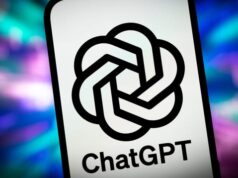
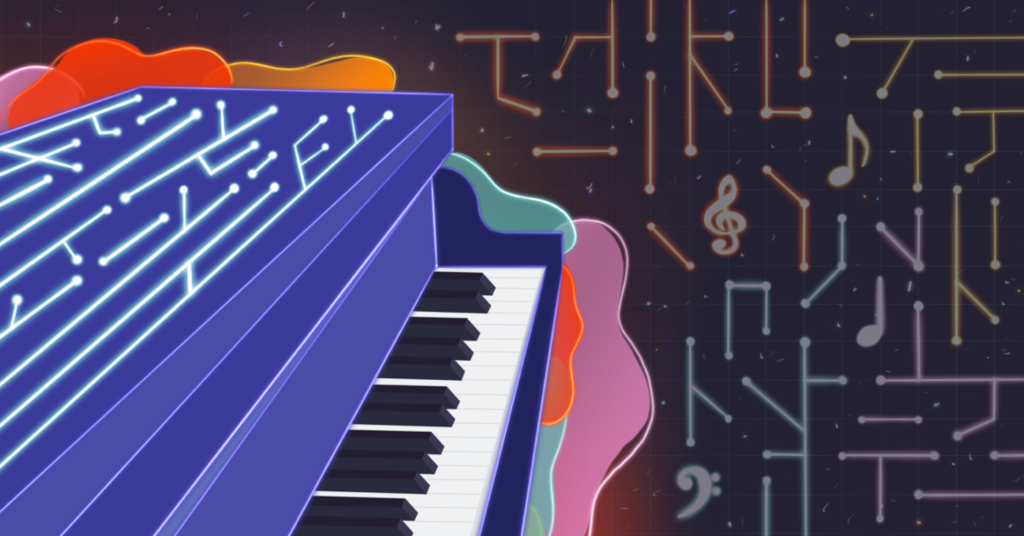
As Artificial Intelligence (AI) tools expand across the internet and become more commonplace in industries like computer science, finance, and technology development, questions are raised in the world of art and music. AI has the power to generate an answer to almost any prompt you can think of – and it’s only getting smarter. In an industry based in creativity and humanity, what happens when it becomes computer generated?
Right now, the transparency of AI art is pretty rough. With a tool like These Lyrics Do Not Exist, a lyric generator made by programmer Peter Ranieri, users can quickly generate song lyrics for any number of genres, moods, and topics. But here’s the catch: they’re not great.
When asked for a happy rock song about love, here’s what it produced:
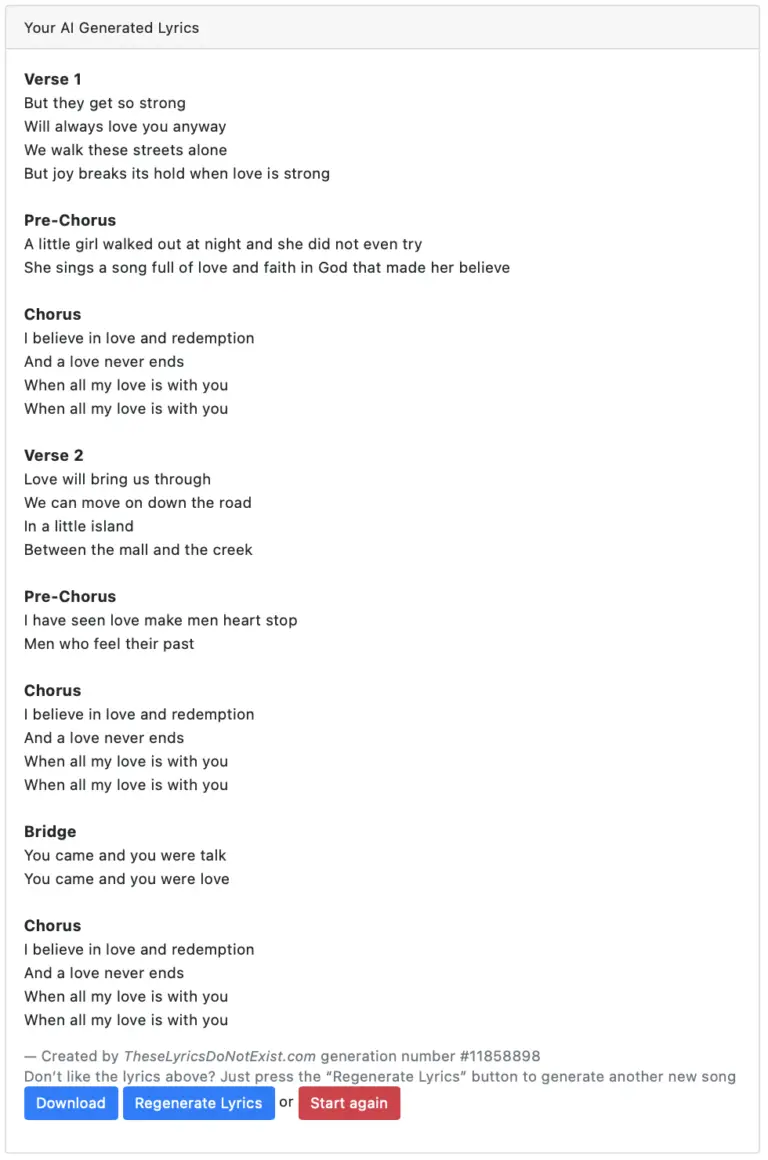
With grammar errors like, “I have seen love make men heart stop,” it becomes clear that this specific AI is, well, not human. Nevertheless, as tools like ChatGPT get more and more use, they become smarter, after having interacted with humans so much.
What does this mean for artists? As shown in discussions of the recent WGA and SAG-AFTRA strikes in the film and television industry, AI poses a threat to those who make a living off their artistry. AI has the ability to generate songs based on an artist’s likeness, replicating their voice, style, and sound. Once art can be generated by the click of a button, hiring and commissioning people to do the work instead becomes costly, and, to big studios, record companies, and corporations, potentially no longer necessary.
This isn’t to say that AI music doesn’t have its place. On platforms like Mubert, which boasts over 100 million AI-generated tracks, the focus is the artistry, rather than the function. Mubert is used by content creators who put the royalty-free music in the background of YouTube videos, online streaming platforms, interviews, and podcasts. With the ever-growing supply of online video content, the demand for music that creators can use without copyright strikes grows.

On Mubert, artists are commissioned for sample audio tracks to help teach the AI how to write music. The company maintains relationships with artists, and meets royalty and legal requirements for their compensation. Currently, Mubert owns a library of over 2.5 million samples that they use to train the AI.
But with platforms like Mubert, one question still stands: is this art? It is certainly music, given the sounds of many instruments, melodic tunes, and overall composition. However, since it’s completely detached from humanity, and, with just an algorithm generating the music, lacks any sense of creativity, making it hard to categorize it as artistry.
Steve Mink, known musically as SM Ink, suggested the idea of categorizing AI music separate from its human counterparts. Mink believes, “It could be great as a way to develop new ideas, or find new sounds.” This would allow the creation and spread of AI-generated music, creating space for the royalty-free platforms like Mubert.
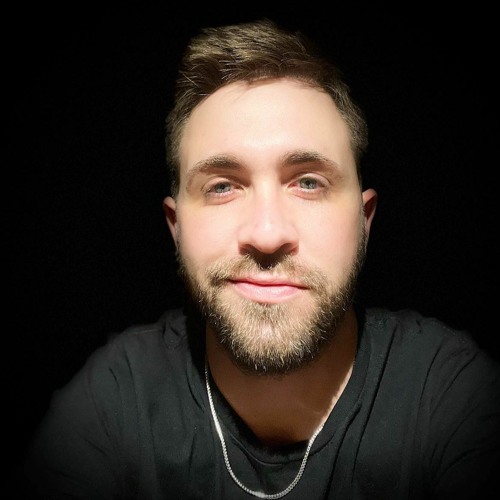
In conversation with Scott Hannay, a multi-instrumentalist, transcriber, and producer from Upstate NY, he expressed hesitation towards the use of AI in making art.
I think there are already plenty of tools out there already that could discourage musicians to develop their skills further, so I’m not too particularly worried about it [discouraging musicians from developing their skills further]. But I do absolutely think it could assist musicians in creating more complex compositions. And it could do the same for people who are otherwise non-musicians; which is both alluring for non-musicians or amateurs, and scary for people who have worked their whole lives trying to build their career in music.
Scott Hannay
Regarding ethical considerations of AI music generators, Hannay feels that concerns grow towards a need for less hiring of composers and musicians for background music in the film and television industry – commercials and radio, specifically.” So many radio commercial music beds are simple, but somebody still has to write it and record it. “Entire radio jingles can easily be shoehorned through AI and ChatGPT if they wanted, potentially removing jobs from the industry,” said Hannay.
Scott makes a key point in the use of AI in radio jingles and film/TV. Musicians make a living not just in traditional songwriting and performing, but also in advertising, film scores, video games, and freelance commission on sites like Fiverr and Upwork. As artificial intelligence tools become smarter, the threat to those musicians’ jobs grows.
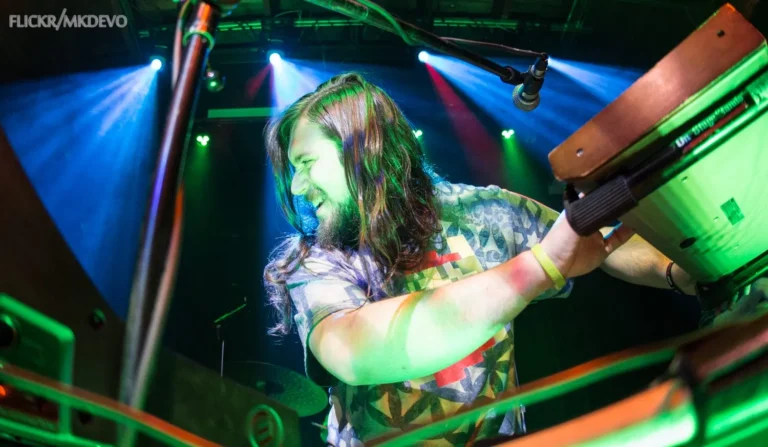
Despite these issues, AI can be a useful tool for musicians in their writing and arranging processes. As Marc Brownstein (co-founder of HeadCount and bassist for Disco Biscuits) points out, AI can be used as a critical tool in developing and transcribing arrangements.
AI brings so many possibilities into the world of music. Thinking about it in terms of the possibility of computers replacing musicians is an extremely limited view.
We think of AI as a tool that can assist musicians in ways never even imagined. Here’s an example. We haven’t played “Papercut” in a few years because I lost the file that contains the sheet music for the fugue and it’s a little tricky to pull off without sheet music. This last week we ran a version of the song into an AI machine and the machine was able to extract all of the individual parts into multi tracks.
We were then able to use this AI-assisted set of tracks by inputting them into a DAW and converting the audio to MIDI, which can then be turned back into sheet music. This all leads me to believe that soon if it doesn’t already exist, there will be a I machines that can transcribe music directly into sheet music. This is an extremely useful tool for learning music.
Marc Brownstein
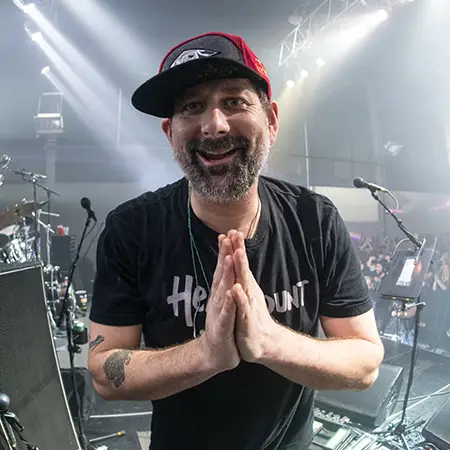
Brownstein poses the contrasting idea of, instead of AI writing and producing the music, it can be a tool that musicians use in their creative processes. Just like any other field, tools like ChatGPT can be extremely helpful in making tedious tasks easier; transcribing sheet music is a perfect example.
Toshi Reagon, daughter of Bernice Johnson Reagon, a musician and civil rights activist, referenced her mother, who said, “That what she has discovered about technological advancement through time is that usually is that whoever is at the epicenter of this transformation commercially, is trying to find out what you need or what you have, take it from you, and sell it back to you, in a way that is exploited and usually creates a lot of wealth for a few people, and not ever distributed evenly across the creatives or the participants in it.”
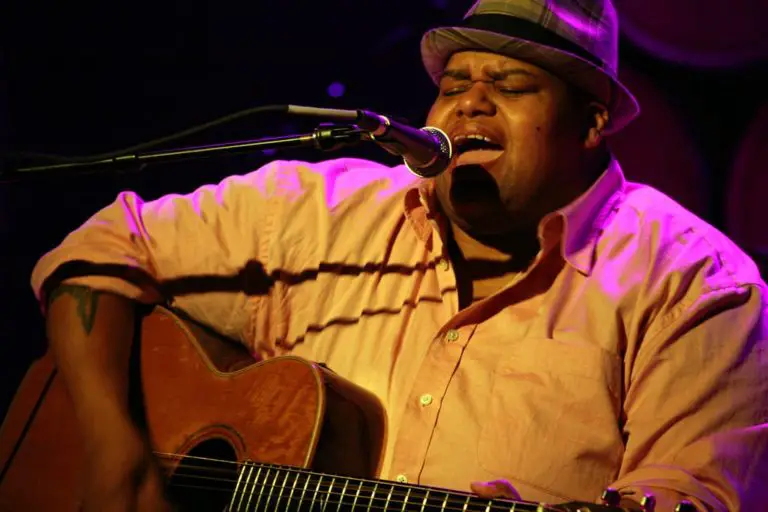
This is the prime issue with AI advancement in the arts. Artists who have built a career and thrive off their creativity and originality are threatened by those “at the epicenter,” who can readily weaponize artificial intelligence to essentially plagiarize established artist likenesses. As we see AI expand and grow, with new skills and strengths, creatives begin to wonder when their jobs will become automated too.
Art is a unique form in that it almost always requires a physical body to create: a hand to move the paintbrush, a voice to sing from, or an arm to play an instrument. Now that technology can replicate that, a troubling dichotomy narrows between human and computer. Nevertheless, artificial intelligence can work alongside humans, as a vital tool and creator in its own right. While the capabilities of AI expand, musicians, creatives, and people in all industries are just beginning to see the possibilities of what it can accomplish.
The post The Rise of AI in Music appeared first on NYS Music.



